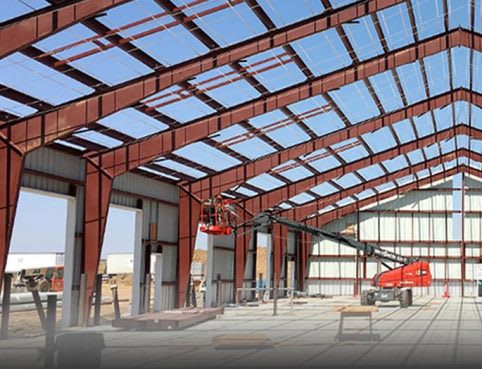SandwichEngine
Structural
- Jul 14, 2021
- 121
Ran across this yesterday. I've simplified the numbers on this example to make the question cleaner.
Existing building is a 25,000 square foot low rise manufacturing facility in Texas. Ground snow is 5 psf.
End user wants to repurpose the building which would require hanging additional piping from the roof that weighs 5 psf over what the building was designed for.
Checking the existing building shows that it's slightly overstressed in some areas but only for the load combination DL+0.45W+0.75Lr, IBC Equation 16-13.
This equation checks to see how the roof members would fare if there was 75% of the roof live load on a completed roof during a 10 year wind event. For this building that's500,000 375,000 lbs of men or (2500) (1875) 200 lb men on the roof during a 10 year MRI wind event. This amount of men of a roof would never be more than about 20 or 30 during construction, not to mention years later.
The worst case unity check for any other load combination is 0.50.
I have no problem allowing the new larger loading from a safety perspective but how do you navigate that it would require you to disregard this portion of the code.
This has me thinking I should call BS on the code when it doesn't make sense, like you would with software.
Haven't decided what I'll do yet but would like to hear other perspectives, especially ones that disagree with my initial take.
Existing building is a 25,000 square foot low rise manufacturing facility in Texas. Ground snow is 5 psf.
End user wants to repurpose the building which would require hanging additional piping from the roof that weighs 5 psf over what the building was designed for.
Checking the existing building shows that it's slightly overstressed in some areas but only for the load combination DL+0.45W+0.75Lr, IBC Equation 16-13.
This equation checks to see how the roof members would fare if there was 75% of the roof live load on a completed roof during a 10 year wind event. For this building that's
The worst case unity check for any other load combination is 0.50.
I have no problem allowing the new larger loading from a safety perspective but how do you navigate that it would require you to disregard this portion of the code.
This has me thinking I should call BS on the code when it doesn't make sense, like you would with software.
Haven't decided what I'll do yet but would like to hear other perspectives, especially ones that disagree with my initial take.

